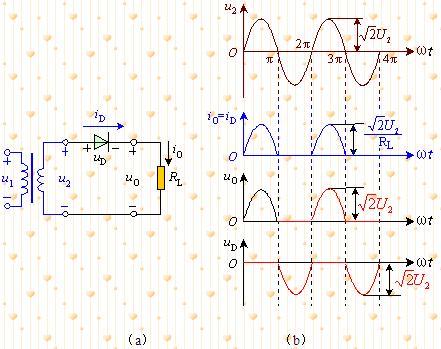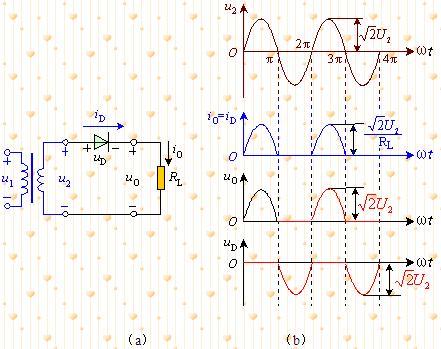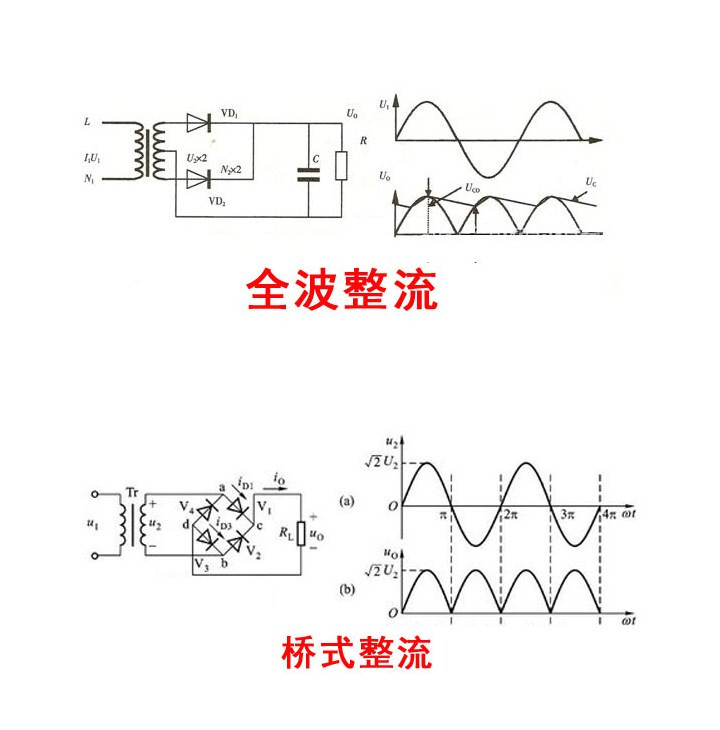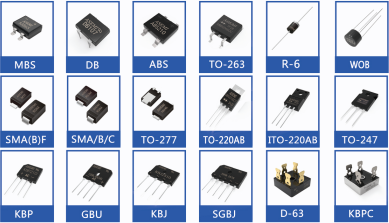ASEMI teaches you to distinguish half-wave and full-wave
Return ListSource:Asemi Date:2019.10.22 Read:0
Schematic diagram of half-wave and full-wave rectifier bridge
Even though have seen so many half-wave, full-wave, bridge-type rectifier bridge circuit diagrams. Do you know what features they have and how do they distinguish them? ASEMI engineers give you a detailed summary
What is single-phase half-wave rectification? What is the difference between bridge rectification and full-wave rectification? The bridge rectifier bridge has the same output waveform as full-wave rectification, but their structure is different.
Single-phase half-wave rectification
Using the unidirectional conductivity of the diode, the diode is forward biased and turned on during the half cycle of the transformer secondary voltage U2 being positive, and a half cycle of DC ripple voltage and current is obtained on the load RL; In the negative half cycle, the diode is reverse biased and is in the off state, and the current is substantially equal to zero. Due to the unidirectional conduction of the diode, the alternating voltage of the secondary side of the transformer is converted into a unidirectional ripple voltage across the load. The purpose of rectification, its waveform is shown in Figure 1. Because this circuit only has current flowing through the load during half a cycle of the AC voltage, it is called a single-phase half-wave rectification circuit.
The difference between bridge and full wave rectification
Full-wave rectification consists of two diodes with a center tap in the middle of the two diodes as the common output (negative) of the two diodes. The waveform is shown at the top right of the left figure, while the bridge rectifier structure and waveform are as follows. The bridge rectification shown in the left figure: As shown in the figure, the bridge rectification is a bridge structure composed of four diodes in a pair of common anodes and a common anode. The rectified output waveform is as shown in the right figure. It can be seen that the full-wave rectification and bridge rectification have the same effect on the rectified output, and the conversion rate is the same. In theory, the alternating current can be converted into direct current, but the internal structure of the two is different. Bridge rectification uses twice the number of chips in full-wave rectification. Does this mean that the cost of bridge rectification is two parts of full-wave rectification? Actually, bridge rectification is not only cost-effective. Lower than full-wave rectification, and the withstand voltage requirement of the chip is lower than full-wave rectification. As mentioned above, full-wave rectification requires a center tap as the output, compared to the four diodes of the bridge rectification. This center tap is troublesome and costly, and from their working principle, we can also see that the diode inside the full-wave rectification has a reverse withstand voltage that is twice the bridge rectification withstand voltage, so in practical applications. The application of bridge rectification is much broader than full-wave rectification.
Single-phase half-wave, full-wave and bridge features
Features of single-phase half-wave rectifier circuit:
(1) The circuit is simple and the device is used less.
(2) When there is no filter circuit, the DC component of the rectified voltage is small, Vo=0.45V2
(3) The ripple of the rectified voltage is large.
(4) The utilization rate of the transformer is low.
Features of single-phase full-wave rectifier circuit:
(1) The rectifier device used is twice as large as the half-wave rectification.
(2) The rectified voltage ripple is small, which is less than half of the half-wave rectification. The output voltage Vo = 0.9V2 when there is no filter circuit.
(3) The utilization rate of the transformer is higher than that of the half-wave rectification.
(4) The secondary winding of the transformer needs a center tap.
(5)The rectifying device is subjected to a high reverse voltage.
Features of single-phase bridge rectifier circuit:
(1) The rectifying device used is twice as large as that of full-wave rectification.
(2) The rectified voltage ripple is the same as the full-wave rectification.
(3)The reverse voltage that each device is subjected to is the peak value of the power supply voltage.
(4)The utilization of the transformer is higher than that of the full-wave rectifier circuit.







 Hotline
Hotline



